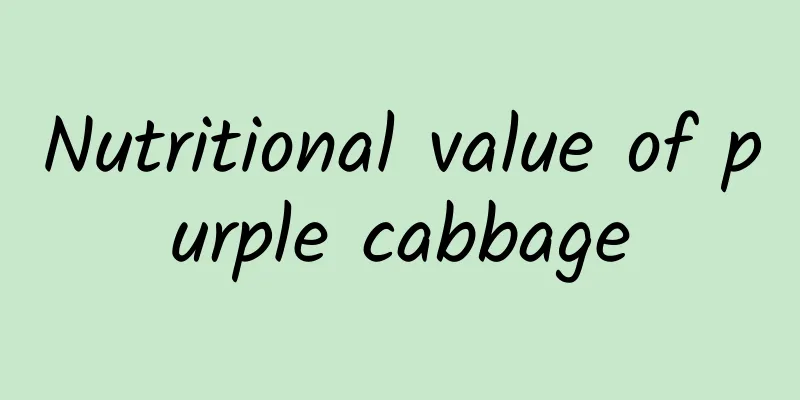Key points for planting pole beans

|
What issues do we need to pay attention to when cultivating beans? Today I will introduce them to you: 1. Land preparationChoose loam with rich organic matter, deep soil layer, pH value of 7.0, good drainage and frozen soil. Apply 3000kg of decomposed organic fertilizer and 40kg of compound fertilizer per 667 mu, break and level, make ridges, set drainage ditches around, 80cm wide and 60cm deep. The ridge is 40m long, north-south, and 1.3m wide (0.8m wide and 0.5m wide). 2. PlantingMix the seeds with 50% carbendazim wettable powder at 0.5% of the seed amount, or soak the seeds in 50 times diluted 40% polysulfide suspension for 2-3 hours, then wash them with clean water and sow them, which can prevent and control a variety of root diseases. Dig holes and sow directly at the end of March. Sow 2 rows per furrow, with a row-to-row spacing of 35cm-55cm. Sow 3 seeds per hole, and water the bottom before sowing. Cover the furrow with plastic film after sowing. 3. Field management① When the plants are trellised and the vines are shaken, combine it with light watering with manure to promptly trellise and guide the vines. Use 2.5-3.0m long bamboo poles to form a "human" shape, tie a horizontal bar in the middle and upper part of the trellising material, and fix it with a thicker trellising material every 15m or so to enhance its anti-lodging ability. The vines need to be supported in the early stage of trellising and after wind and rain. ② Fertilization Thai bean king has a long growth period and requires a lot of fertilizer. The principle of fertilization is to apply enough base fertilizer, light seedling fertilizer, apply before flowering, apply after flowering, and apply heavily during the pod stage. Too much fertilizer and water in the seedling stage is prone to root rot, yellow leaves, or plant elongation, delayed flowering, and falling flowers and pods. The early fertilizer and water should be controlled. During the vine period, stems and leaves occur in large numbers, and rhizobia have not yet formed in large numbers. It can be combined with inter-cultivation and soil cultivation to apply manure water once, 1000kg per 667 acres, to promote vine leaf growth and flower bud differentiation. From budding to early flowering, the plant enters the stage of vegetative growth and reproductive growth, and requires a lot of fertilizer and water. Apply 10kg of ammonium sulfate or 1500kg of human feces and urine per 667 acres. After flowering and pod formation, the plant consumes a lot of nutrients, and the supply of fertilizer and water should be guaranteed to keep the soil moist. However, a large number of nodules have been formed at this time, and the nitrogen fixation ability has been enhanced. Therefore, less nitrogen fertilizer should be applied. 30kg of compound fertilizer, 10kg of superphosphate, and 5kg of potassium chloride should be applied per 667 square meters. After that, topdressing should be done once every 2 harvests (5 days). Spraying a small amount of magnesium, iron, zinc, and copper fertilizers can increase yield and improve quality. In the late harvest period, if the plants do not age prematurely and the climatic conditions are suitable for their growth, topdressing can be appropriately applied 1-2 times to promote flowering, extend the harvest period, and increase yield. ③ Field humidity management and weed control The relative humidity during the flowering period should be above 50%, and the appropriate soil humidity is 60%-70% of the maximum water holding capacity of the field. Drought or excessive rain will cause flowers and pods to fall off, so attention should be paid to watering and removing water from the field. During the entire growing period, diseased plants and weeds should be removed in time, yellow leaves should be removed, light should be increased, and ventilation should be strengthened. Straighten the pods to prevent the occurrence of deformed pods caused by mechanical obstruction. |
<<: Kidney Bean Sauce Meat Buns
>>: How to eat green beans Home-cooked green beans
Recommend
The efficacy and function of purple amaranth
Have you ever eaten purple amaranth? Do you know ...
How is the Chilean CMPC Group? Chilean CMPC Group reviews and website information
What is the website of Chile CMPC Group? Chile CMP...
The efficacy and effects of sweet almonds. How much sweet almonds can cause poisoning?
Sweet almonds are a kind of snack that people esp...
How to Choose Tomatoes
If you want to eat tomatoes raw, choose pink ones...
How to eat black beans best? Common black bean eating tips
Black beans are the most nutritious bean food in ...
What is the Banana Butterfly?
I believe that everyone has no idea what the bana...
What should not be eaten with mango? Taboos of eating mango
Mango is a delicious fruit produced in tropical r...
Bamboo leaves
Bamboo leaves: sweet, slightly cold, non-toxic. B...
Benefits of watermelon juice porridge
Do you still remember the benefits of watermelon ...
Ingredients and methods of wolfberry papaya porridge Benefits of wolfberry papaya porridge
Goji berry papaya porridge is a delicious and nut...
What is Arvato Group like? Arvato Group reviews and website information
What is the website of Arvato Group? Arvato Group ...
How long is the shelf life of Rejoice shampoo
Shampoo is a must-have item for everyone's da...
What are the benefits of eating white radish in winter
There is a saying among the people that "eat...
How to water the thorn tree? Precautions for watering the thorn tree
The cultivation of the lucky worm is very particu...
Is it easy to grow sycamore? How to grow sycamore
The flowers of the plane flower are brightly colo...









